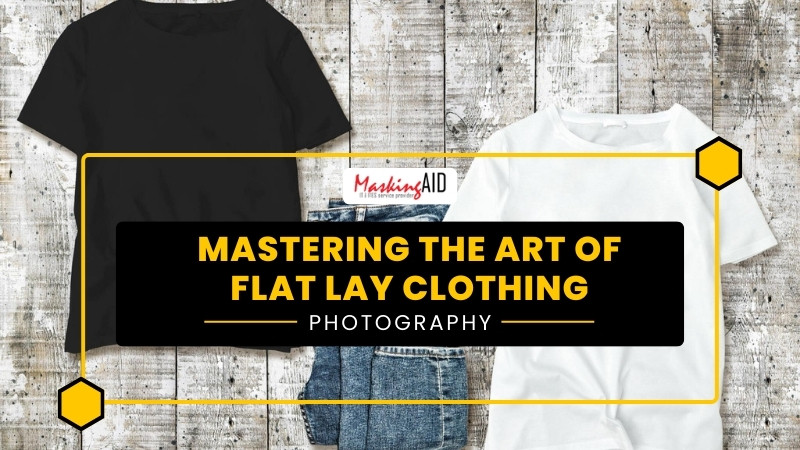
19 May Mastering The Art Of Flat Lay Clothing Photography
Flat lay clothing photography is a method of taking pictures of clothing and accessories from a bird’s-eye view, where the items are laid out on a flat surface and photographed from above. This style of photography is widely used in fashion and e-commerce for its visually appealing and detailed presentation of products. It is particularly beneficial for clothing businesses as it provides a clean, uncluttered view of the products, allowing customers to focus on the details.
Mastering flat lay clothing photography in the fashion industry brings numerous benefits, including increased sales through visually appealing presentations. Flat lay enables creative brand storytelling and enhances social media engagement, especially on platforms like Instagram. It proves cost-effective with minimal setup requirements, offering versatility for various contexts.
Equipments for Flat Lay Photography
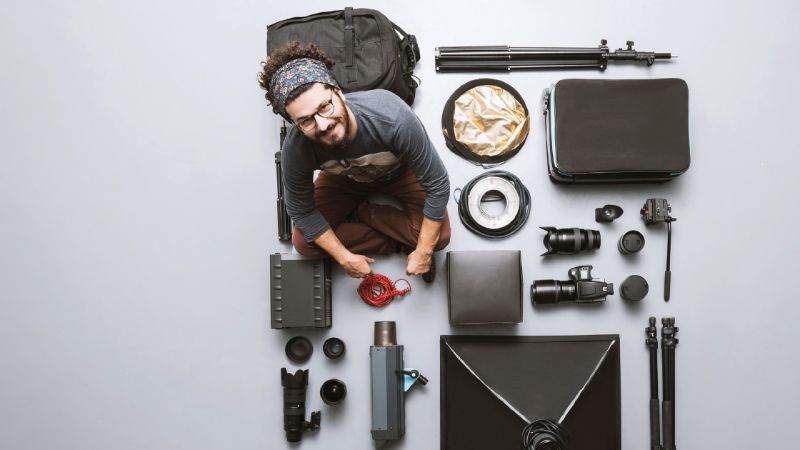
To achieve professional-looking flat lay images, certain equipment is essential. Here’s a detailed flat lay clothing photography setup begins:
Camera
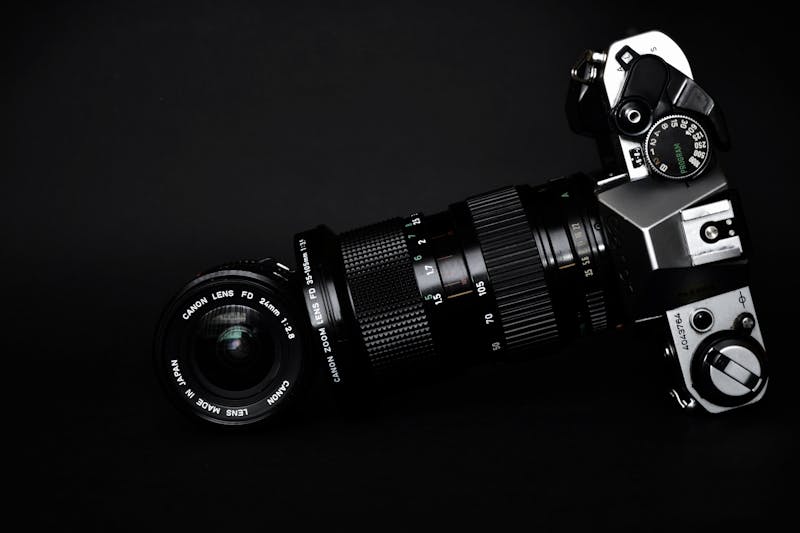
A DSLR or mirrorless camera with interchangeable lenses is recommended for full creative control over the composition, angle of view, and depth of field. Entry-level cameras can also produce high-quality flat lay images, and even smartphones can be used effectively in some cases.
Tripod
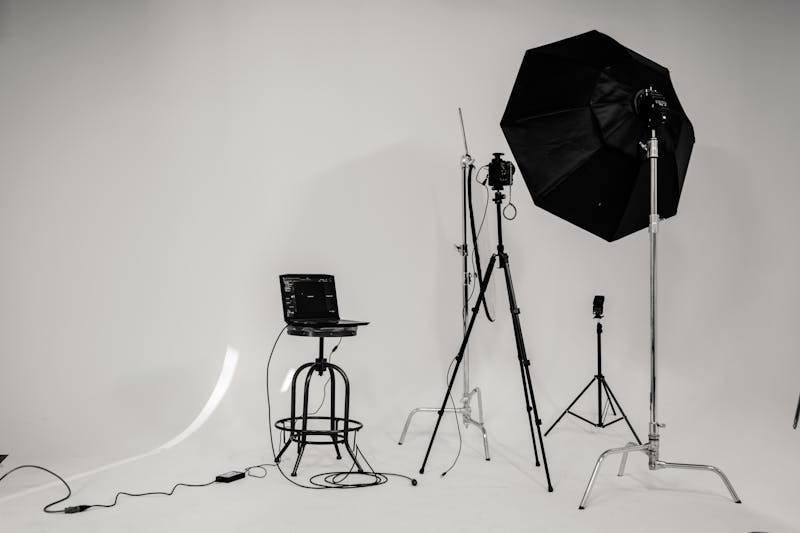
Lighting
Proper product photography lighting is key to highlighting the details and textures in flat lay photography. Natural window light is often preferred for its softness, but artificial lighting such as LED panels, ring lights, or softboxes can provide more control and consistency, especially when natural light is not available.
Backdrops
Backdrops provide a clean and clutter-free setting for your flat lay composition. They come in various materials, colors, and textures, allowing for versatility in your shots. You can choose from simple solid colors to more elaborate patterns like marble or wood.
Reflectors and Diffusers
To manage shadows and ensure even lighting, reflectors and diffusers can be used. Reflectors bounce light back onto the subject, while diffusers soften the light to prevent harsh shadows.
Props
Props add context and interest to your flat lay images. They should complement the main subject and adhere to the chosen color palette and theme of the composition.
Editing Software
Post-processing software like Adobe Lightroom allows you to edit and enhance your flat lay images, adjusting exposure, color balance, and other elements to achieve the desired look.
Additional Tools
Depending on the complexity of your setup, you may also need items like a camera mount, a backlit table for clothing photography, or a tethering app or cable to connect your camera to a computer for a live view of your shots.
Lighting Setups For Flat Lay Photography
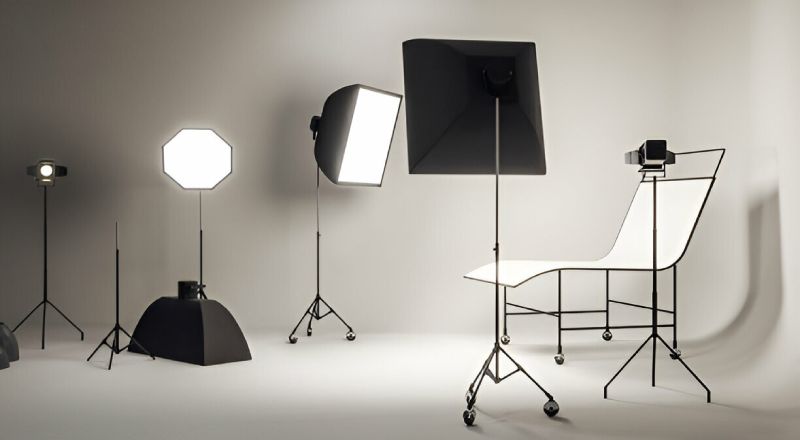
For flat lay clothing photography lighting the setup has to be well put to achieve a great result.
Double Softbox Kit: This setup involves using two softboxes, which provide a broad, diffused light source. The softboxes can be positioned on either side of the flat lay setup to create even lighting and minimize shadows.
LED Panels: LED panels can be used to provide a consistent and adjustable light source. They can be positioned at different angles to control the direction and intensity of the light.
Ring Lights: Ring lights, such as the Spectrum Aurora Gold Luxe Pro, provide a circular light source that can be positioned directly above the flat lay setup. This can create even lighting and reduce shadows.
Natural Light: Natural light can be used effectively for flat lay photography, especially when it is diffused through a window or a piece of chiffon or cloth. However, it offers less control than artificial light sources and is dependent on the time of day and weather conditions.
Tips For Lighting Flat Lay Clothing Photography
Use Plenty of Light: For clothing photography, it’s important to use plenty of light to highlight the details and textures of the clothing items.
Avoid Harsh Shadows: Harsh shadows can obscure details and create unwanted contrast in your images. Use diffused light sources and reflectors to minimize shadows
Maintain Consistent Lighting: Consistent lighting is key to achieving professional-looking images. If you’re using artificial light, make sure the intensity and color temperature of the light remain consistent throughout your shoot
Experiment with Angles: Different lighting angles can create different effects and highlight different aspects of the clothing items. Don’t be afraid to experiment with different angles to find the best lighting setup for your specific needs
Post-Processing: Use photo editing software for professional editing, to adjust the lighting in your images if necessary. Tools like Adobe Lightroom can be used to adjust exposure, contrast, and color balance, among other things
Composition Techniques For Flat Lay Photography
The “S” Curve: This technique involves creating an “S” shape with the items in your flat lay to guide the viewer’s eye through the image. It’s a dynamic way to arrange elements and can be particularly effective for creating movement in the composition
Diagonal Composition: Placing a diagonal line through the center of the frame with balanced elements on either side can create a sense of harmony and balance in your flat lay images
Triangle / Rule of Odds: The human eye is drawn to geometric shapes, and using triangles or arranging objects in odd numbers can make the composition more engaging. This could mean placing three items in a way that they form a line or a triangle, which is visually pleasing
Circular Composition: Circular arrangements can help focus the viewer’s attention on the central part of the image. This can be achieved by placing objects in a circular pattern or using props that naturally form a circle
Filling the Frame: To emphasize details, you can fill the entire frame with your subject. This technique is particularly useful when photographing items with interesting textures or patterns
Fibonacci Spiral: For more complex or busy images, using the Fibonacci Spiral can help guide the viewer’s eye through the composition without creating chaos.
Flat lay clothing photography tips
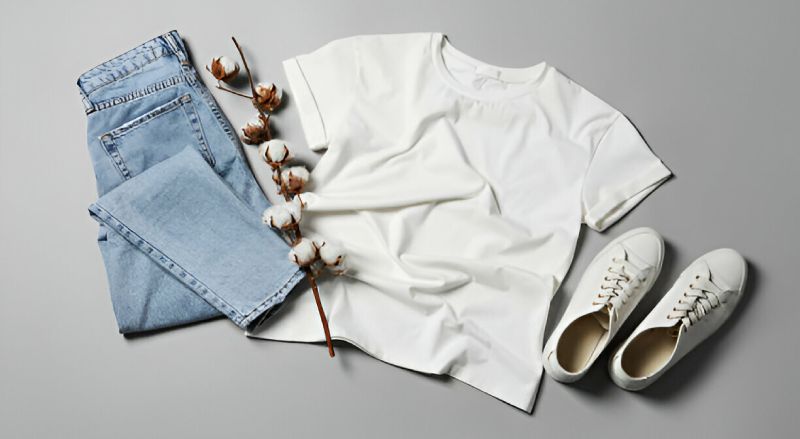
Choose the Right Background: A clean and uncluttered background will give your flat lay more impact. Avoid busy patterns or bold colors that could distract from the main subject.
Lighting: Natural light is often the best choice for flat lays, especially when diffused to avoid harsh shadows. If using artificial light, ensure it’s evenly distributed to maintain consistency.
Hero Product Placement: Most flat lays have a hero product or main subject. Place this item strategically within the composition, often using the rule of thirds for a balanced look.
Movement and Flow: Since flat lays are static, creating a sense of movement is crucial. Arrange objects with this in mind, perhaps leading the eye along a path or towards the main subject.
Experiment with Props: Props can add depth and context to your flat lay. Use them to accentuate the main subject, but be careful not to clutter the composition.
Cropping: Cropping can be used to improve the composition, either by cutting out items fully or partially to achieve the perfect flat lay image.
Camera Alignment: Ensure your camera is parallel to your flat lay to avoid distortion. Use grid lines to help align your shot if your camera or phone has this feature.
Editing: Post-processing can enhance your flat lay images. Adjust exposure, contrast, and color balance to refine the final look.
Keep it Authentic: Aim for a natural look as if the scene was stumbled upon by chance. This requires a meticulous yet casual approach to arranging items.
Storytelling: Consider the story you want to tell with your flat lay. This narrative will guide the selection and arrangement of props and the overall composition.
Steps For Styling Clothes For Flat Lay Photography
Select the Clothing Items and Accessories: Choose the clothing items and accessories you want to photograph. Ensure they are clean, without wrinkles, and well-maintained
Prepare the Clothes: Iron or steam the clothes to remove any wrinkles and give them a crisp, fresh look. This step is crucial as wrinkled clothes can detract from the overall aesthetic of the image
Arrange the Clothes: Arrange the clothes on your chosen surface. You can experiment with different arrangements, such as folding, draping, or layering the clothes. The arrangement should highlight the details and features of the clothes
Add Accessories and Props: Incorporate accessories and props that complement the clothing. This could include items like jewelry, shoes, hats, or sunglasses. Props can add depth and context to your flat lay, but be careful not to clutter the composition
Set Up the Camera: Ensure your camera is parallel to your flat lay to avoid distortion. Use grid lines to help align your shot if your camera or phone has this feature. Also, make sure your focal length is above 35 mm to avoid distortion in the corners of the photo.
Frequently Asked Questions(FAQ)
Should I edit my flat lay photos
Minor edits like cropping, color correction, contrast adjustments, and slight retouching can take flat lays to the next level visually. Avoid overediting.
What props work well beside the main subjects?
Fabrics like linen, burlap, cotton, wool add nice backdrops and textures. Interesting surfaces like wood boards, marble also complement.
How can I learn more about flat lay photography?
Experiment on your own while referencing online tutorials, look at examples on Pinterest and Instagram for inspiration, join photography communities to connect with others doing flat lays.
Final Thoughts
If you are equipping oneself with the right tools, including a quality camera, tripod, lighting equipment, backdrops, and editing software, you are good to go for the flat lay photography adventure. However, You can always try various flat lay photography clothing background removal, lighting solutions, setups, composition techniques, and styling tips that contribute to the success of flat lay photography. Remembering to tell a cohesive story, maintain consistency, and apply thoughtful editing. They are key elements in creating compelling flat lay images.
